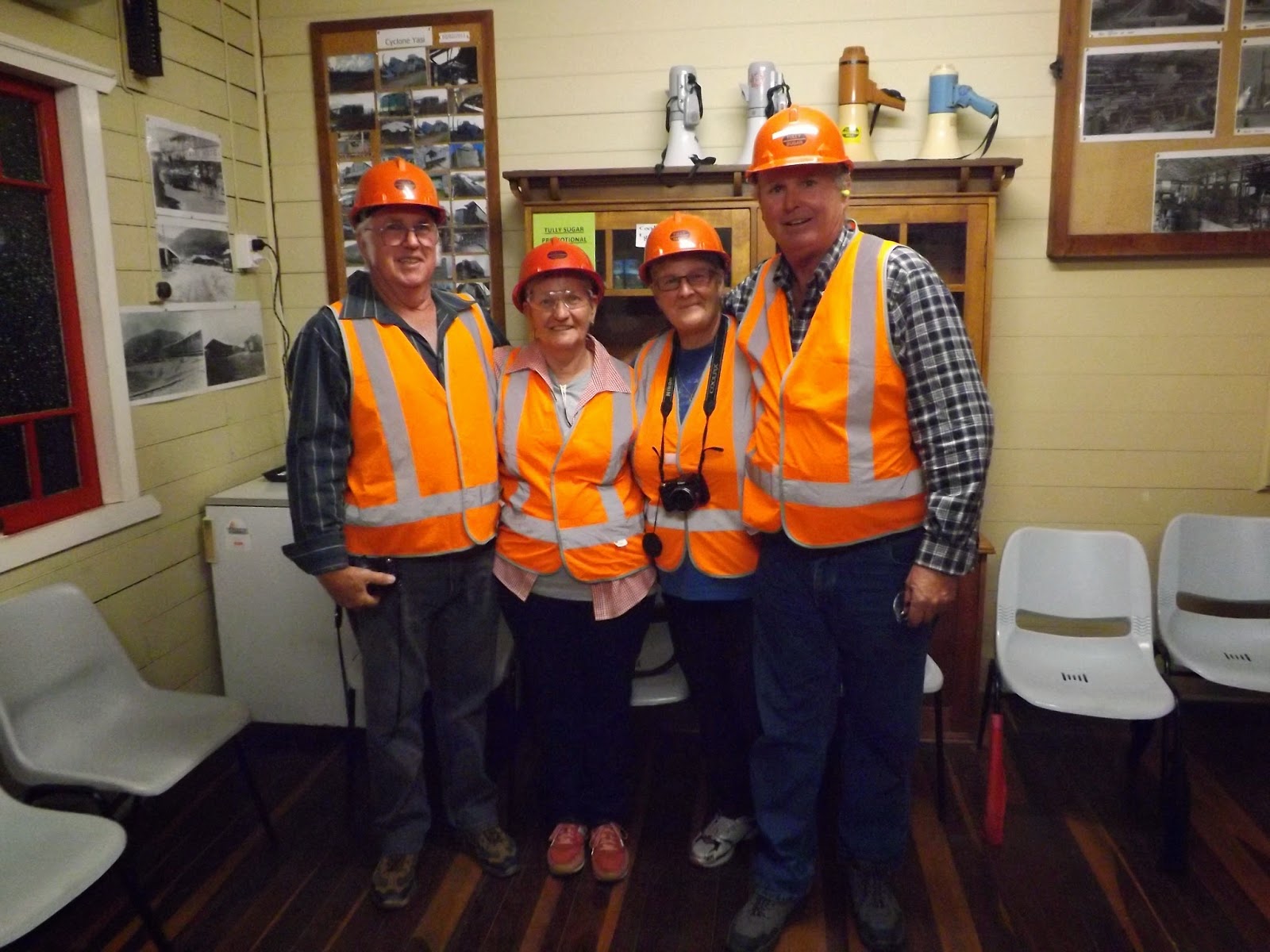Tully is a sizable town catering for the Sugar growers
including a sugar mill.
We checked the mill out and found that we could do a
tour at night. So at 6pm we were at the designated spot for the tour to start.
Kath was our tour guide, not our Kathy, another one.
We
started off with a short induction of the sugar industry from planting to the
exporting of the raw sugar.
Then off on the tour of the mill.
OK to start at the
beginning. There are about 260 varieties of cane, and in Queensland they plant
about 24 of them.
Billets about 300mm
long are planted, a billet is cane cut to 300mm lengths.
It takes 12 months for
the cane to be mature before harvest. When the cane flowers (brilliant silver
in the sun shine tried to capture in photos but turns out nothing like in real
life.), it is harvested, put into little cane rail wagons, then pulled to the
mill by the loco`s.
Once at the mill the
loco is removed and the wagons, (the old ones were 8 ton loads and are now
being replaced with 10 ton ones) are moved along by hydraulic rams to be placed
precisely for the cane billets to be tipped out. One man has the very important
job of removing the pins out of the drawbar joining the wagons together and to
check that there are no problems with the wagons.
The wagons then go
onto the “Tippler” where the whole wagon is held firm and rotated 360 degrees
emptying it`s load into the hopper before the wagon is pushed to the other side
were another man replaces pins joining them back together again. After two hours
the men swap over so they don’t become complacent.
Once in the hopper the
cane goes through the “Fluffer” to spread it out evenly over the conveyer belt
then it goes through a giant big powerful electro magnet, into a washer through
a roller crusher, next through steam, then through a big spinning dryer that
separates the molasses from the raw sugar.
Through cold air
conditioners and more roller sieves and scrapers until there is the raw sugar
that goes for export.
Through this process
there is a sluge that is mostly the farmer’s dirt, that is trucked back to the
farmer and spread over the paddocks, all they pay is the transport fees. It is
very rich fertilizer.
The cane fibre is
dried and then fed into the furnace to create steam. High pressure steam drives
the turbines to generate power both for the plant and to feed back into the
power system.
The steam then goes
through and around the mill being used for varies applications, going from high
pressure to low pressure, depending on requirements.
It takes about 6hours
from the time the billets are tipped to the raw sugar being ready to export.
Using about8 tons of
cane to produce one ton of sugar.
To start the plant it
takes about 30 thousand tons of fibre at a cost of about $30,000 so once the
plants starts it runs 24/7 unless there is a major break down.
We saw some metal bits
that were pulled from the cane by the electro magnet. A lot of roofing iron
from cyclones, with bits of machines, cutter blades, even tools, hammers,
spanners and such.
All in all a really
interesting couple of hours, we would do it again to maybe make more sense of
the information given and be able to understand it in more depth.
Boiler furnice
Rollers for the extraction station

Fugals separate the molasses from the raw sugar
Raw sugar ready for export
Metal rubbish from farmers paddocks
We all look elegant hey what??












No comments:
Post a Comment